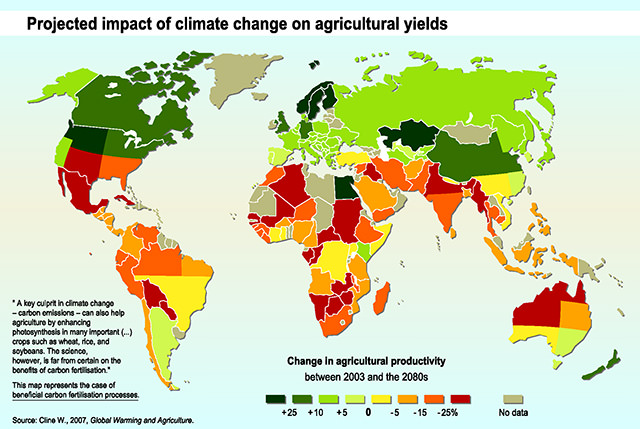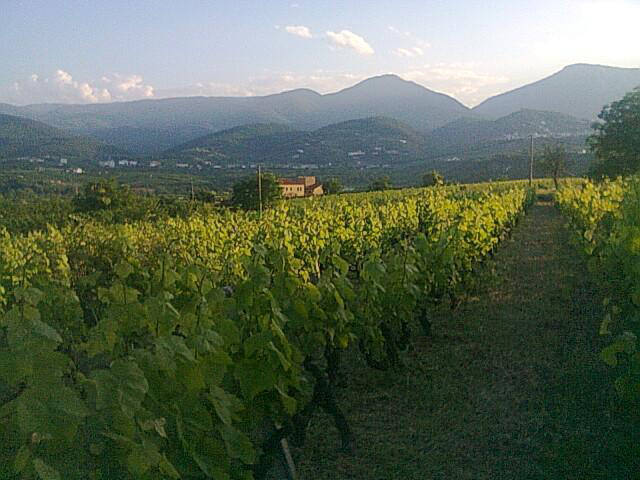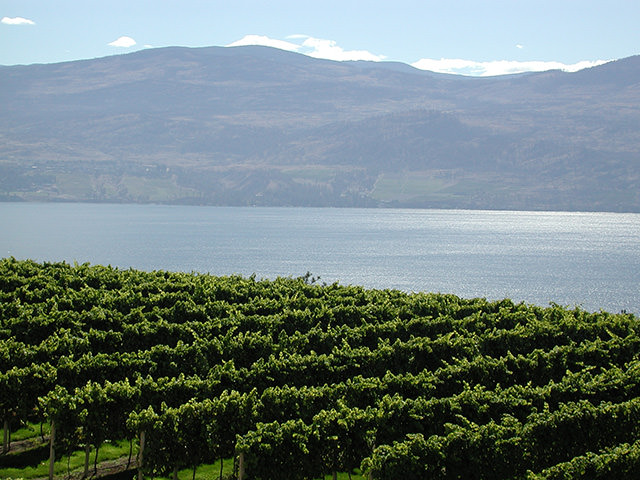The climate talks in Paris are well underway and we’re all hoping for an agreement that keeps future warming under 2° C. This decade was the hottest year on record and we’re already seeing the effects. If nothing’s undertaken soon wine and humanity’s future will be a grim one. In this article we look at what the future might hold for the latter.
Warmer temperatures will lead to the extinction of certain grapes in certain areas. Syrah, for example, has been a part of the Languedoc for ages. Due to hotter temperatures it can’t grow there anymore. England on the other hand is now warm enough to grow champagne varieties and Chablis producers don’t have to worry anymore about devastating spring frosts.
Hotter weather also leads to earlier harvesting. Over the past half-century harvesting dates have advanced globally by two to three weeks. Subsequently, alcohol levels in red wines have risen by 1% and 2% since the 1960s and the 1970s. Wine producers are complaining that wines are becoming more alcoholic and less complex in flavor.
Changes are happening all over the place and although there are some positive notes most news isn’t great. A lot of regions and appellations struggle with perishing varieties, key to their survival. But the worst is yet to come.
Making predictions how local climates will change under global warming has proven to be difficult. Nonetheless efforts were made and a seven-author study of European wine regions was undertaken under supervision of Marco Moriondo. The extensive study is called, “Projected Shifts of Wine Regions in Response to Climate Change”. It made the following prediction. To survive, either vineyards will have to creep closer to the poles or towards higher altitudes. The latter isn’t possible in every region. While growers in Chianti and the Provence can move to higher altitudes, growers in Bordeaux can’t.
The study concludes, unsurprisingly, “given the climate sensitivity of grape vines, suitable zones for their cultivation are very susceptible to small changes in climate.” Meaning as much as if you want to make today’s Champagne in the future, conditions in the Champagne region need to stay almost exactly the way they are. The study lists a number of regions that will be hit badly by 2020/2050, depending on future developments. The list includes Languedoc, Roussillon, Penedès, Extremadura, la Mancha and the Douro among others. The Provence and the Southern Rhone are labeled as possible survivors as they can move to higher altitudes.
That’s only weather talk. Climate change, if extreme enough, will disrupt global stability, which in turn will affect wine production. In times of distress people tend not to worry so much about the palate and tannins from the latest Barolo vintage. There probably won’t be one anyway.
But let’s not despair. There’s a good chance we’ll lose some traditional wines but other varieties and regions will be suddenly more suitable and we will see great wines coming from regions that were deemed unsuitable in the past. Farming technology has come a long way as well. The climate may yet have a hard time eradicating certain traditional varieties if we can outsmart it.
Time goes by and things change and being sad about it doesn’t help. Having said that, it is key that warming stays under 2° C if we want to keep the abundance and variety of wines we have today. As for Thailand, I’m afraid it’ll be a long time before it gets cool enough here to produce a proper wine.
[Article by Alexander Eeckhout]



 0
0